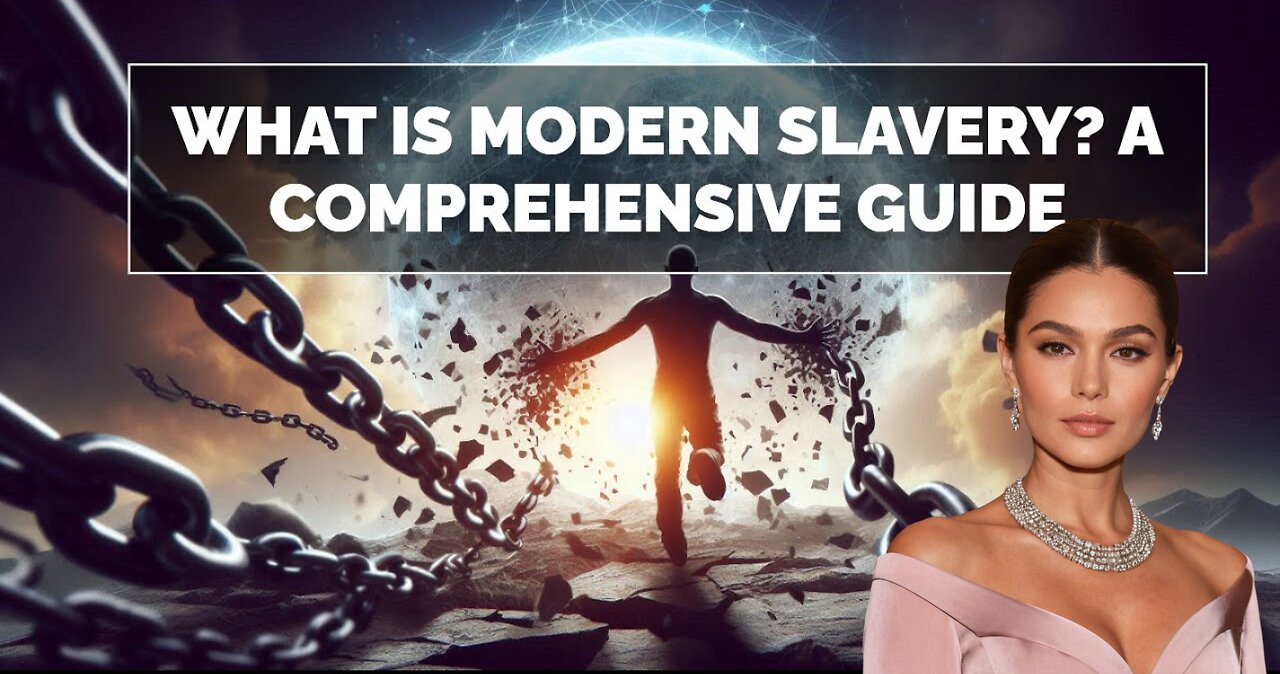Premium Only Content

What Is Modern Slavery? A Comprehensive Guide
"What is Modern Slavery?" is a powerful song shedding light on the hidden atrocities of modern-day slavery, including human trafficking, forced labor, debt bondage, and exploitation across the globe. Through gripping lyrics, this song calls for awareness, action, and change, urging us to open our eyes, stand together, and break the chains of oppression. Join the fight to end modern slavery and bring justice to millions.
🎶 Raise your voice and stand for freedom!
🔗 Like, subscribe, and share this song to help spread awareness and inspire action against modern slavery.
💬 Comment below on how you can help break the chains and support victims of human trafficking.
💸 Support us via PayPal (link in description) to keep raising awareness through music!
Follow us for updates on new releases and join the movement to end modern slavery!
Hashtags:
#EndModernSlavery #StopHumanTrafficking #FightForFreedom #BreakTheChains #AwarenessSong #JusticeForAll #StopExploitation #EmpowermentMusic #VoiceForTheVoiceless #EndExploitation #StandForHumanRights If someone is enslaved or trafficked, it’s crucial to seek help in a safe and discreet manner. Here’s what to do in the United States or any other country:
1. Seek Immediate Help if Possible
Call Emergency Services: If you are in immediate danger, call your local emergency number (911 in the U.S.).
National Human Trafficking Hotline (U.S.): Call 1-888-373-7888 or text "HELP" to 233733 (BEFREE). This service is available 24/7, confidential, and connects you with trained professionals who can help you find safety and resources.
2. Use Safe Locations for Communication
Reach out from a safe place where you are not monitored, such as a trusted business, a hospital, or a police station.
If you can access a phone, consider using a public phone or someone else’s phone to avoid being tracked.
3. Contact a Trusted Authority or NGO
United States: The U.S. Department of Health and Human Services and U.S. Department of Homeland Security can provide support. Reach out through their trafficking hotlines or local offices.
Internationally: Contact the nearest embassy or consulate of your country for assistance if you are trafficked outside your home country. They can help you connect with local resources and authorities.
4. Document Information Safely
If you have access to write things down safely, try to document:
Your location (any landmarks, addresses, or businesses nearby)
Names of people involved in trafficking or enslaving you
Details about your situation, which may help authorities locate you or assist in rescuing others later.
5. Use Trusted Websites for Guidance
In the U.S., visit the National Human Trafficking Hotline (https://humantraffickinghotline.org) for resources and advice.
Globally, organizations like UNODC (United Nations Office on Drugs and Crime) provide resources for victims and can connect you with local NGOs and services.
Use government sites like U.S. Department of State’s trafficking page (https://www.state.gov/humantrafficking) for additional resources and contact points.
6. Find a Local NGO or Shelter
Contact local shelters or NGOs that specialize in helping trafficking victims. Many have partnerships with the government and offer confidential assistance.
Examples include Polaris Project in the U.S. and international organizations like Hope for Justice or A21.
7. Protect Yourself While Planning to Leave
Try to blend in and avoid raising suspicion if you cannot escape immediately.
Connect with local authorities or organizations when you have a safe opportunity, and follow their guidance for leaving your situation safely.
These steps are designed to help trafficked individuals connect with government resources and professional help.
-
 1:15:40
1:15:40
Man in America
7 hours agoThe DISTURBING Truth: How Seed Oils, the Vatican, and Procter & Gamble Are Connected w/ Dan Lyons
21.9K14 -
 6:46:07
6:46:07
Rance's Gaming Corner
9 hours agoTime for some RUMBLE FPS!! Get in here.. w/Fragniac
121K1 -
 1:30:48
1:30:48
Josh Pate's College Football Show
8 hours ago $3.88 earnedCFP Reaction Special | Early Quarterfinal Thoughts | Transfer Portal Intel | Fixing The Playoff
25.1K -
 23:55
23:55
CartierFamily
3 days agoElon & Vivek TRIGGER Congress as DOGE SHUTS DOWN Government
84.9K90 -
 5:43:44
5:43:44
Scammer Payback
2 days agoCalling Scammers Live
166K25 -
 18:38
18:38
VSiNLive
2 days agoProfessional Gambler Steve Fezzik LOVES this UNDERVALUED Point Spread!
124K17 -
 LIVE
LIVE
Right Side Broadcasting Network
10 days agoLIVE REPLAY: President Donald J. Trump Keynotes TPUSA’s AmFest 2024 Conference - 12/22/24
4,132 watching -
 4:31
4:31
CoachTY
1 day ago $27.15 earnedCOINBASE AND DESCI !!!!
171K11 -
 10:02
10:02
MichaelBisping
1 day agoBISPING: "Was FURY ROBBED?!" | Oleksandr Usyk vs Tyson Fury 2 INSTANT REACTION
94.7K13 -
 8:08
8:08
Guns & Gadgets 2nd Amendment News
2 days ago16 States Join Forces To Sue Firearm Manufacturers Out of Business - 1st Target = GLOCK
118K88